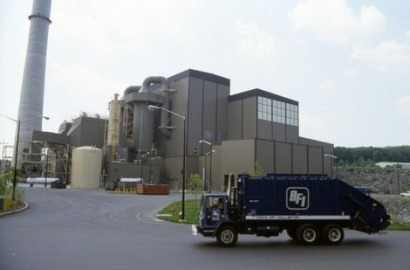
Advanced Plasma Power, Broadcrown and Royal Dahlman have all passed the design phase of the competition which is focused on the design and development of an integrated waste to energy gasification system that would be commercial at between 5 and 20 megawatts (MWe). The chosen plant could now be designed, built, tested and in operation by 2016 at sites in Tyseley in Birmingham, Wednesbury in the West Midlands and Grimsby in North East Lincolnshire, depending on the design taken forward.
All three companies worked hard to develop evidenced designs, known in the sector as Front End Engineering Design (FEED) studies, over a 10 month period. These designs were subsequently tested through a combination of laboratory and pilot-scale testing on different feedstocks and through underlying process modelling. It is thought to be the first time a total system design approach for three energy from waste gasification facilities of this size have been reviewed to this level of detail in a research and development project.
The project is part of the ETI’s Bioenergy programme, which is looking at the application of sustainable biomass and waste resources for flexible and affordable low carbon energy. The decision as to which demonstrator plant the ETI expects to help fund for construction is being made by the ETI, with the help and advice of an advisory group made up of independent experts. The decision will be announced in the next few months.
Once it is constructed, the chosen plant will operate as a demonstration site for up to three years. It will then continue to operate as a commercial venture. The complete system will need to operate with a net electrical efficiency of at least 25 percent and an availability of at least 80 percent.
Advanced Plasma Power designed a demonstration facility with a net electrical output of 5MWe, producing a clean syngas using their patented Gasplasma technology. This process uses a separate plasma furnace to crack and clean the crude syngas from a gasifier prior to its direct utilisation in gas engines. Planning permission for the site at Tyseley in Birmingham was granted by Birmingham City Council in December 2013.
Broadcrown designed a demonstration facility with an electrical output of 3MWe using a concept that promotes distributed waste management and power generation. The company participated with major European and American technology companies, including a gas engine manufacturer, to demonstrate a combined cycle process with high-efficiency using syngas. Planning permission for the site at Wednesbury was granted by Sandwell Council in November 2013.
Royal Dahlman led a team of British, Swiss, American and Dutch partners, to develop a plant with an electrical output of 7MWe using the patented MILENA-OLGA technology, developed in cooperation with ECN. This will convert the waste into a clean syngas suitable for a high-efficiency combined cycle power plant, using gas turbines for the power conversion. Planning permission for the site at Grimsby is expected to be granted by North East Lincolnshire Council shortly.
“Each proposal was extremely well received by the Planners and the Environment Agency” said Paul Winstanley, the ETI Bioenergy Project Manager overseeing the competition. “Our request was to design an economically and commercially viable, efficient energy from waste gasification demonstrator plant, and each of these three companies demonstrated they could exceed our specifications on a variety of feedstocks.”
Steve Lee, Chief Executive Officer of the Chartered Institute of Waste Management, added that the support to develop and demonstrate the viability of advanced treatment technology to capture the energy value in residual wastes is extremely welcome given that gasification offers the potential for highly efficient conversion of waste into fuel, contributing to a more sustainable, low carbon and energy secure future.
For additional information:

